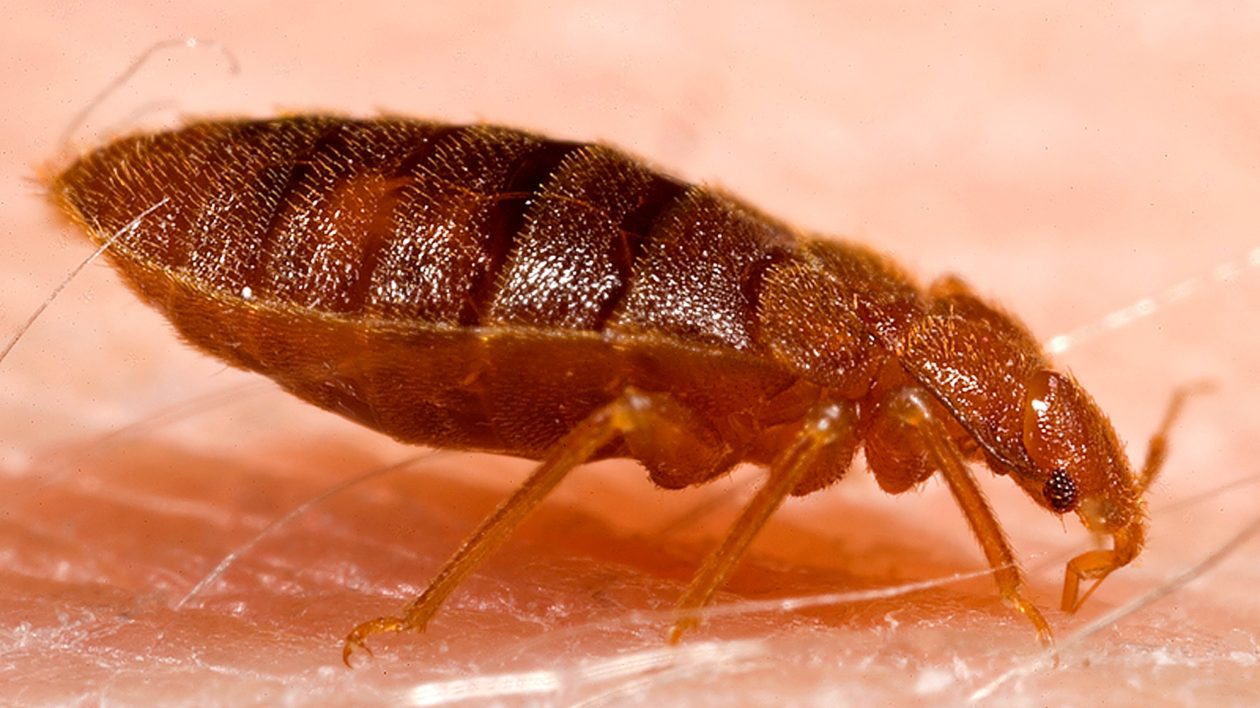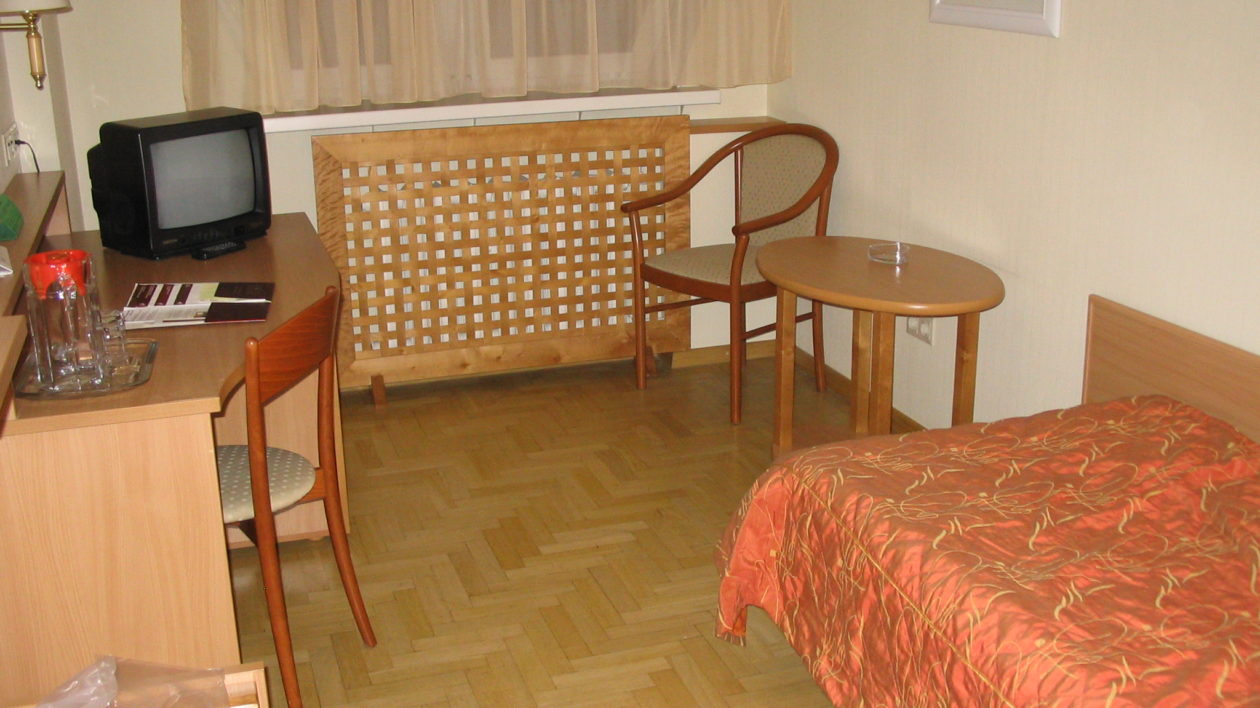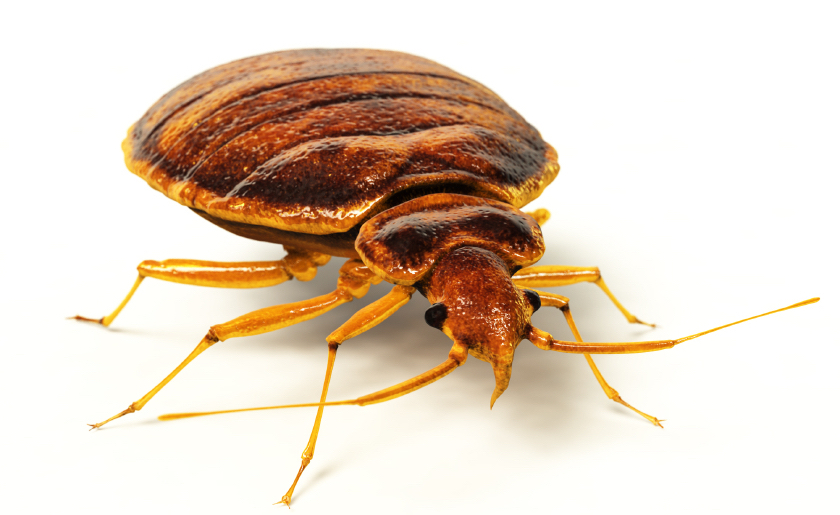Sometimes, life imitates Star Wars.
After recently watching the movie Solo, I found myself somewhat reluctantly trudging back to my dodgy hotel room. In the movie, there is a point where Han Solo is thrown into a dungeon to face a human-eating beast.
I entertained the thought that while my hotel was only slightly cleaner than Han’s dungeon, it at least didn’t contain any hungry beasts.
Little did I know.
I was about to be devoured.
I Let the Bed Bugs Bite
The next morning, I itched a welt on my wrist. An apparent mosquito bite, not entirely unexpected since I had spent the previous day fishing a swamp. I felt another lump on my neck. Weird. Despite the marshy environment, I couldn’t remember the mosquitoes.
Within the next two hours, more than 100 large welts lined my arms, with some others scattered throughout the rest of my body. Now, you can get one stealthy mosquito bite. But 100?
I had a bad feeling about this.
The itch became unbearable Perhaps it was chiggers. Yes, chiggers! Disturbing as it sounds, I felt positively giddy at the prospects of a chigger attack. Five minutes of research debunked this. It wasn’t chiggers.
Finally, I had to acknowledge the horrible truth. I had just experienced the wildlife encounter we all dread. Bed bugs.
I began feverishly researching bedbugs online. People write a lot about bed bugs. In fact, everyone who has ever been attacked feels the need to share their experiences. (And yes, I am acutely aware that I am following this pattern). The problem is, the information is contradictory, unscientific and often aimed at selling questionable “all natural” bed bug control products.
I ditched my luggage and heat treated everything else, a tedious and time-consuming process. I didn’t bring bedbugs home with me. Still, the encounter left me with questions. I write a lot about the wildlife we encounter in our daily lives. I realized that here was a creature that people are encountering – with increasing frequency – in hotel rooms around the globe. What was going on?

When Biodiversity Bites
A significant component of conservation is learning to coexist. A nature lover may write celebratory poems to urban pigeons and gently remove spiders from the house. But there is a line. All thoughts of peaceful coexistence evaporate when biodiversity moves into the bedroom. Into your bed.
Bed bugs don’t spread disease. There exist many more harmful and dangerous creatures out there. But bed bugs wait until you’re asleep, then line up and dine on you. Of the many, many blogs about bed bugs out there, there is not one that suggests we should peacefully learn to share our space with bed bugs.
I admit I wanted to put my whole bed bug adventure behind me. But I’m a science writer. I write about the lives of the creatures that live around us. I knew I had to know more about this little creature that has increasingly become a part of our nightmares.
I turned to science journalist Brooke Borel’s Infested: How the Bed Bug Infiltrated Our Bedrooms and Took Over the World. I know what you’re thinking: I don’t want to read a whole book on bed bugs.
However, I can assure you this: If you wake up in your hotel room with welts all over your body, you are going to immediately look at your phone and then spend many, many hours reading increasingly bad and downright nutty advice. You could have spent the time reading an enjoyable, funny and scientifically literate book on the topic. Borel spends a lot of time with scientists who spend a lot of time studying bed bugs.
Trust me: If you’re obsessing about bed bugs, read this book.
It’s filled with a lot of interesting tidbits about the insect. For instance, you will commonly read on-line that a tell-tale sign of bed bugs is that their bites are in a straight line (which is true). Most internet experts describe this as “breakfast, lunch and dinner,” leading one to believe that a bed bug feeds along a line, getting its three square meals as it goes.
Borel debunks this, and instead writes that the bedbugs actually line up where your exposed skin meets the bed “like pigs on a trough.” Somehow, this makes a bedbug attack even more upsetting. It revealed two things to me. One, I shift a lot in my sleep, as my arm contained many straight but criss-crossing lines. And two, I was sharing my hotel bed with a veritable horde of “little piggies.”
Viewed objectively, bed bugs are fascinating animals, and human/bed bug relations even more so. One of the most intriguing aspects of the book is that Borel traces how bed bugs ended up in the very artificial ecosystem of our beds. Bed bugs commonly live on bats in caves. One theory suggests that when our ancestors moved into caves for shelter, some bed bugs feasted on large, snoring mammals. It was the beginning of a long, dysfunctional relationship.
As humans moved to new forms of habitation, the bed bugs adapted nicely. When humans moved around the globe, bed bugs hitched a ride. Into the 20th century, bed bugs were a common feature in traveler’s tales, portrayed as an unavoidable nuisance.
Then came the era of DDT, which was sprayed not only on fields but also in homes. DDT proved spectacularly effective in wiping out bed bugs, or so it appeared. The ecological and human health consequences of DDT are, of course, now well documented and the eventual ban was rightly viewed as a key moment in environmental history.
Many of us grew up with bed bugs seeming to be more folklore than real threat. We heard “don’t let the bed bugs bite” but didn’t really ponder what that meant. When I was younger, I attended an insect fair where an enthusiast had a colony of bed bugs on display in a glass cage. Each month, he’d stick his arm into the cage and allow his “pets” to feed. This struck me as one of the world’s worst hobbies. It was also the first time I really thought much about bed bugs.
By the early 2000’s, bed bugs were suddenly in the news. Infestations were reported in hotels around the globe, and they were spreading fast. There was a twist: DDT had been used so widely that some bed bugs inevitably developed resistance. These hardier bed bugs slowly began breeding. As global travel became more widespread, a bed bug renaissance occurred.
This has prompted new research into how to control the creatures, as Borel writes. However, it’s clear that – given our traveling ways – bed bugs are now a part of our ecosystem. Hiding in the headboards, waiting to line up to feed on your arm.

An Ounce of Prevention
We’re not likely to win the war on bed bugs anytime soon. So how do you best navigate our bed bug-infested world?
Another cliché is absolutely true here: An ounce of prevention is worth a pound of cure. First, let’s get this out of the way: Every exterminator, researcher and bed bug expert will tell you that bed bugs don’t need dirty places. They can live in a five-star luxury hotel, or they can live in that sketchy hostel.
This is true. However, if I ask you to picture a bed bug-infested hotel, the first image that comes to mind is pretty much exactly where I stayed and encountered bed bugs. I am a fan of cheap rooms. However, if as you’re checking in you hear a voice in your head that sounds like your mother warning you not to stay there, you might want to listen. If the sight of your room reminds you of a dungeon scene in Star Wars, call on the force (or common sense) and get out of there.
So, yes, I do believe there are some obvious places to avoid, or at least examine extra closely. But no matter where you stay, look. I know that your journey may have been long and tiring, and you just want to relax. I know it’s a pain to do a bed bug check.
But you know what’s more painful? Telling your spouse that you just got attacked by bed bugs and may be bringing the little monsters home with you. Or the lengthy process of heat treating every single item you brought on the trip.
Even worse is introducing them to your home. Every account of home infestations reads like a horror novel.
Take the time to do a thorough search. Look at the sheets, under the mattress and especially behind the headboard. Little red bugs, blood and black specks (bedbug poop) should obviously be very bad signs. While you search, put your luggage in the room’s bath tub. Bed bugs don’t live there.
Borel encourages us to accept the bed bug as part of our world: “Embrace the weird, the tiny, the things we’d like to ignore. Find joy in learning about them,” she writes.
It’s an approach I embrace wholeheartedly on this blog, and in my life. But I’d prefer not to embrace any more bed bugs. I know they’re just doing what they must to survive, but I’d prefer they do it far, far away.




Now that’s a cool blog post, refreshing in a world with fewer and fewer of these. I’m gonna try to grab a copy of that bed bug book. I was wondering if they actually are important parts of our ecosystem, like mosquitoes are?
Thank you for sharing this! I really hate the bites of bed bugs since they are really itchy, it’s always better to check the beds on hotels to make sure they are really clean!
– Steve (Owner of a pest control rosenberg)
Sounds like a rough experience, but to simplify things, you could’ve contacted a company that provides heat treatment options. You leave your belongings in a heating device and sit back as your problems go away. Here’s an example of a company that brings mobile heat trailers to peoples homes: http://www.bedbugsexterminators.ca/pest-control/mobile-bed-bug-heat-treatment/
Hi Paul,
Thanks for your comment. I actually did try to find such a company but no such services were offered where I live (Boise). As bedbug infestations continue, as I’m sure they will, I suspect this service will become more in demand!
Cheers,
Matt
Worth Reading!! As summers are coming, many families will be traveling on vacation or to visit relatives this summer. Be sure to not end up bringing those pesky little things back with you. If you already dealing with the problem of bed bugs then be sure to take professional help as soon as possible: https://framespestcontrol.com/bed-bugs-removal
It has been proven that bed bugs do spread disease. Please do better research!
https://www.cbc.ca/news/health/bedbugs-with-drug-resistant-bacteria-found-1.984674
Kimberlee,
Thanks for your comment. The bed bugs in the story link were shown to carry antibiotic resistant bacteria from a human host. While that is indeed alarming, it is not the same as spreading disease. Mosquitoes (malaria, West Nile virus, dengue fever) and ticks (Lyme disease, Rocky Mountain spotted fever) are widespread diseases spread primarily by these host species feeding on humans. Bed bugs may pick up bacteria from individual hosts but it would not be correct to state they are spreading disease…yet.
DDT is hell on crops, (and the animals that eat the crops or bugs on the crops or fish etc) but in homes it can eradicate malaria, and so it did for much of the world.
Matt, great blog- both funny and revolting! I am an avid bed bug checker—having a nasty allergy to their bites which makes them even worse if that is possible! Thank you for sharing.
Thanks – will go to local library and find Brooke Borel’s “Infested: How the Bed Bug Infiltrated Our Bedrooms and Took Over the World”. Unless it’s already checked out!
What happens if those bed bugs hitch a ride to one’s actual home? During your research, did you come across advice on how to get rid of them in an eco-friendly way should you find them in the house? I hear Diatomaceous Earth might work somehow..? Taking clothes, bed linens, etc. to the nearest laundromat’s dryer and putting them through hottest cycle is great for materials, but how do we battle these bed bugs in our home environment? And hopefully without chemicals? Unfortunately, we can’t throw away a house like we can a suitcase 🙂